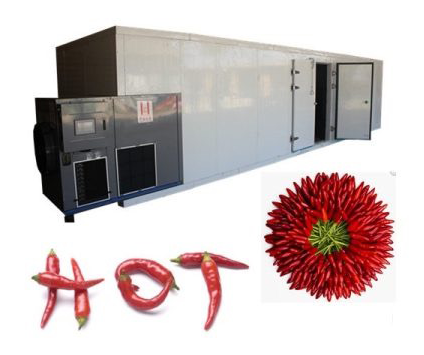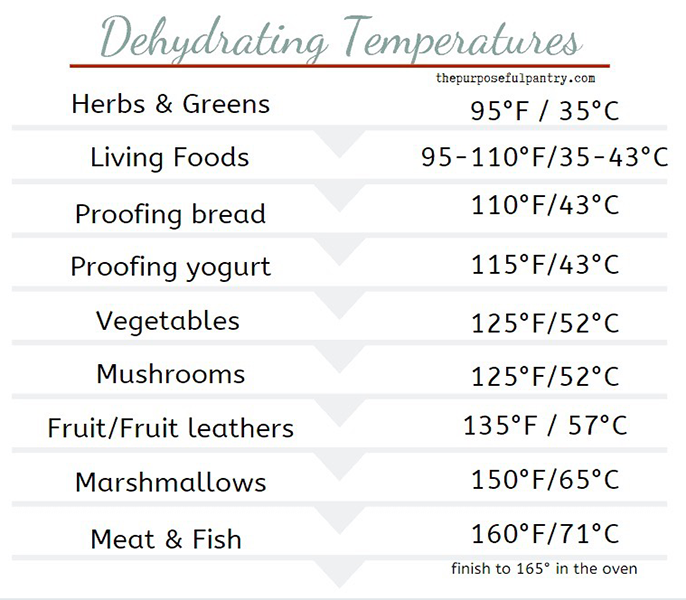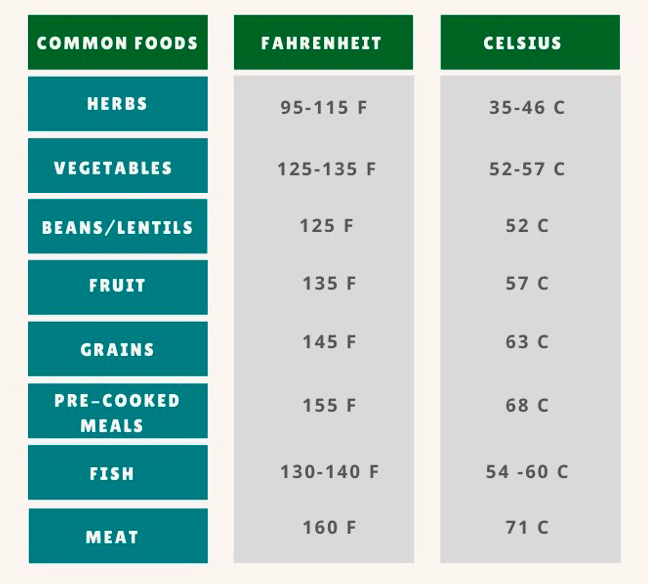
Content Menu
● Understanding Food Dehydration
>> The Science Behind Dehydration
● Optimal Temperatures for Dehydrating Food
● How Hot Does A Food Dehydrator Get?
>> Temperature Control Mechanisms
● Factors Affecting Dehydration
● Practical Tips for Using a Food Dehydrator
● Common Uses for Food Dehydrators
● Benefits of Using a Food Dehydrator
● How Long Does It Take To Dehydrate Foods?
● Dehydrating Techniques
● Safety Considerations
● Conclusion
● FAQ
>> 1. What is the best temperature for dehydrating fruits?
>> 2. Can I dehydrate meat in my food dehydrator?
>> 3. How long does it take to dehydrate vegetables?
>> 4. What happens if I set my dehydrator too hot?
>> 5. How should I store my dehydrated foods?
● Citations:
Food dehydrators are essential kitchen appliances that allow users to preserve various foods by removing moisture. This process not only extends the shelf life of food but also concentrates flavors and nutrients. Understanding how hot a food dehydrator gets is crucial for achieving optimal results in food preservation. This article will explore the temperatures used in food dehydrators, the science behind dehydration, and practical tips for using these devices effectively.

Understanding Food Dehydration
Food dehydration is a method of preserving food by removing moisture. The process inhibits the growth of bacteria, yeast, and molds, which thrive in moist environments. By reducing the water content of food to less than 20%, dehydrated foods can last for months or even years without refrigeration.
The Science Behind Dehydration
Dehydration works by evaporating moisture from food through controlled heat and airflow. Most modern food dehydrators function similarly to convection ovens, utilizing a heating element and a fan to circulate hot air around the food. This method ensures even drying and prevents case hardening, where the outer layer of food dries too quickly, trapping moisture inside.
Optimal Temperatures for Dehydrating Food
The temperature setting on a food dehydrator is critical for successful dehydration. Different types of food require different temperatures for optimal drying:
- Herbs: 95°F (35°C)
- Vegetables: 125°F (52°C)
- Fruits: 135°F (57°C)
- Meats (Jerky): 145°F (62°C)
- Poultry: 160°F (70°C)
These temperatures ensure that foods dry properly without compromising their texture or nutritional value. For instance, drying fruits at too high a temperature can lead to loss of flavor and nutrients.
How Hot Does A Food Dehydrator Get?
Most food dehydrators operate within a temperature range of 95°F to 160°F (35°C to 70°C). However, it's essential to note that the air temperature inside the dehydrator may be higher than the actual temperature of the food being dried due to evaporation cooling.
Temperature Control Mechanisms
Many dehydrators come with adjustable thermostats that allow users to set specific temperatures based on the type of food being dried. Some models may have preset functions for different foods, making it easier for users to achieve desired results without constant monitoring.
Factors Affecting Dehydration
Several factors influence how effectively a food dehydrator dries foods:
- Air Circulation: Proper airflow is vital for even drying. Models with horizontal airflow tend to provide better results than those with vertical airflow.
- Humidity: High humidity levels can slow down the drying process. In humid conditions, it may be necessary to increase drying times or adjust temperatures slightly.
- Thickness of Food: Uniformly sliced foods dry more evenly. Thicker pieces will take longer to dehydrate compared to thinner slices.

Practical Tips for Using a Food Dehydrator
1. Preparation: Wash and slice fruits and vegetables uniformly to ensure consistent drying.
2. Blanching: For certain vegetables, blanching before dehydration can help preserve color and flavor.
3. Spacing: Avoid overcrowding trays; leave space between pieces for air circulation.
4. Monitoring: Check on your food periodically to prevent over-drying or under-drying.
5. Storage: Store dehydrated foods in airtight containers in a cool, dark place to maximize shelf life.
Common Uses for Food Dehydrators
Food dehydrators can be used for various purposes beyond just creating snacks:
- Making jerky from meats
- Drying fruits like apples and bananas
- Preserving herbs
- Creating vegetable chips
- Preparing fruit leathers
Benefits of Using a Food Dehydrator
Using a food dehydrator offers numerous advantages:
- Nutritional Retention: Dehydrating foods preserves their nutrients better than some cooking methods, as it avoids high heat that can destroy vitamins and minerals.
- Cost Savings: Buying fruits and vegetables in bulk when they are in season and dehydrating them can save money in the long run.
- Waste Reduction: A dehydrator helps reduce food waste by allowing you to preserve excess produce before it spoils.
- Convenience: Dried foods are lightweight, portable, and easy to store, making them perfect for camping trips or emergency supplies.
How Long Does It Take To Dehydrate Foods?
The time required for dehydration varies based on several factors:
- Type of food
- Thickness of slices
- Humidity levels
Most foods will take anywhere from four to twelve hours to dehydrate fully. Some dehydrators can operate continuously for 24 hours or more without issues. It's important to note that while you can't technically over-dehydrate foods, doing so at high temperatures can diminish nutrient content.
Dehydrating Techniques
There are various techniques you can use when operating a dehydrator:
1. Uniform Cutting: Ensure that all pieces are cut uniformly; this allows them to dry at the same rate.
2. Layering: Place items in a single layer without overlapping; this promotes even airflow around each piece.
3. Testing for Doneness: To test if your food is adequately dried, place some pieces in a glass jar; if condensation forms inside the jar, they need more time in the dehydrator.
4. Conditioning Dried Foods: After dehydration, allow dried foods to cool before storing them in airtight containers. This helps prevent moisture buildup that could lead to spoilage.
5. Experimenting with Flavors: You can enhance your dried snacks by adding spices or marinades before dehydration, allowing flavors to penetrate deeper into the food during the drying process.
Safety Considerations
While using a food dehydrator is generally safe, there are some precautions you should take:
- Always wash your hands before handling food.
- Use clean utensils and cutting boards.
- For meats, ensure they reach an internal temperature of at least 165°F (74°C) before dehydration to eliminate harmful bacteria.
- Store dried foods properly in airtight containers away from light and moisture.
Conclusion
Understanding how hot a food dehydrator gets is essential for anyone looking to preserve food effectively. By adhering to recommended temperature settings and considering factors like air circulation and humidity, users can achieve excellent results in their dehydration efforts. Whether you are making snacks or preserving seasonal produce, a food dehydrator can be a valuable addition to your kitchen arsenal.

FAQ
1. What is the best temperature for dehydrating fruits?
The best temperature for dehydrating fruits is typically around 135°F (57°C) to retain flavor and nutrients while ensuring proper drying.
2. Can I dehydrate meat in my food dehydrator?
Yes, you can dehydrate meat at temperatures around 145°F (62°C) to make jerky; however, ensure that it is properly marinated and prepared beforehand.
3. How long does it take to dehydrate vegetables?
The time required varies by vegetable type and thickness but generally ranges from 6 to 12 hours at about 125°F (52°C).
4. What happens if I set my dehydrator too hot?
Setting your dehydrator too hot can lead to case hardening, where the outer layer dries too quickly, trapping moisture inside and potentially leading to spoilage.
5. How should I store my dehydrated foods?
Store dehydrated foods in airtight containers in a cool, dark place; this helps maintain their quality and extends shelf life.
Citations:
[1] https://www.webstaurantstore.com/guide/741/food-dehydrators-buying-guide.html
[2] https://www.mitchellcooper.co.uk/what-is-a-dehydrator-commercial-buying-guide
[3] https://homesteadingfamily.com/preservation-101-intro-to-dehydrating-food/
[4] https://www.bestbuy.com/discover-learn/10-reasons-to-buy-a-food-dehydrator/pcmcat1634332391134
[5] https://vacuumsealersunlimited.com/how-to-use-a-food-dehydrator/
[6] https://www.commercialdehydrators.com.au/dehydrating-recipes-filters
[7] https://www.webmd.com/diet/dehydrating-food-good-for-you
[8] https://www.youtube.com/watch?v=lEUA2t2XD5M
[9] https://www.youtube.com/watch?v=rXNIHzcE8F0
[10] https://www.goodhousekeeping.com/appliances/a31904157/what-is-a-dehydrator/











